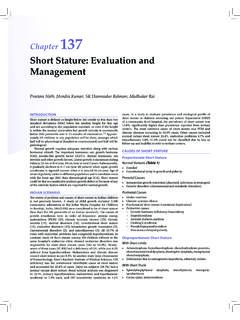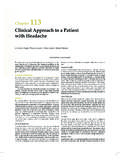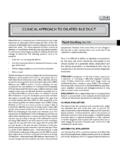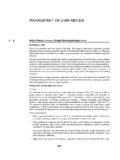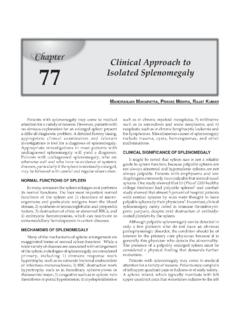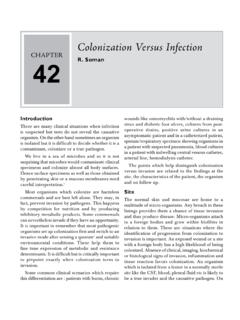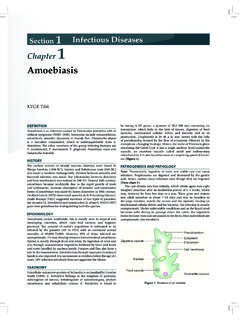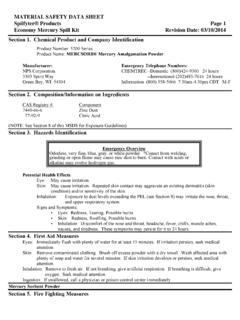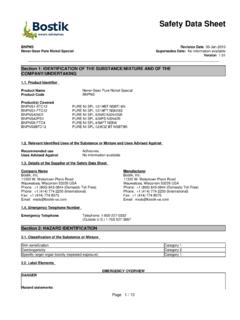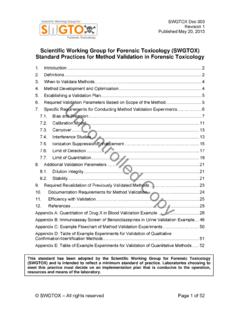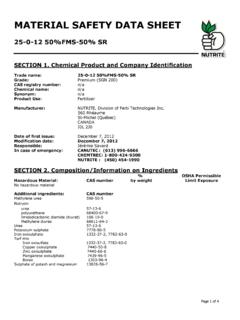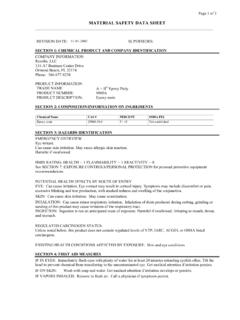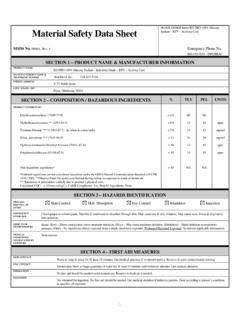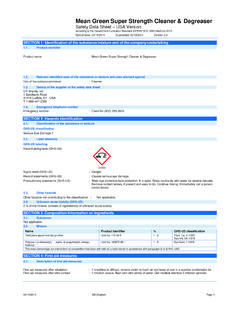Transcription of Section 12 Toxicology Chapter 92 - The Association of ...
1 VENOM ALLERGENSBees release large amount of venom, 50 140 Allergens constituting the venom include vasoactive amines, small polypeptides and enzymes. Histamine, mast cell degranulating peptide, phospholipase A2 (PLA2), hyaluronidase, acid phosphatase and melittin are the important ,3 Bumble bee venom is antigenically and chemically similar to honey bee REACTIONS TO HYMENOPTERA VENOMThe spectrum of allergic reactions to bee venom ranges from normal (mild) local reactions to large local reactions to systemic anaphylactic reaction (mild, moderate and severe).
2 2 Systemic toxic reactions are seen in cases of mass envenomation by large number of bees. The usual effect of a sting is intense local pain, erythema and mild edema around the sting site. An area of induration with a diameter of 10 cm or more; which peaks between 24 hours and 48 hours and then subsides, is referred to as an large local reaction (LLR).2 The symptoms are limited to the site of sting without any systemic involvement. Stings in the mouth may cause serious airway obstruction even in people who are not hypersensitive to venom.
3 Systemic manifestations include hypotension, bronchoconstriction, respiratory distress, syncope, laryngeal edema and death. It is classified according to severity as given in Tables 1 to 3. Systemic allergic reactions are IgE mediated Type 1 hypersensitivity reaction. Toxic reactions in mass bee envenomation are not allergic, but are due to the direct action of large amount of venom. Common clinical presentation of patients in India is normal (mild) local reaction surrounding the site of sting.
4 However, severe anaphylaxis and multiorgan dysfunction after bee sting have been reported. There are several reports from India and abroad, of patients developing rhabdomyolysis, acute renal failure, Guillain-Barr Figure 1: Honey bee with its sting (posteriorly placed) embedded in the patient s skinIndian Guidelines and Protocols: Bee StingTarun Kumar Dutta, V MuktaChapter 92 TABLE 1 British Society of Allergy and Immunology classification of allergic, systemic reaction to bee sting2 SeveritySymbolReactionsMild+Pruritus, erythema, urticaria, nausea, angioedema, rhinitisModerate++Mild asthma, moderate angioedema (Figure 2)
5 , abdominal pain, vomiting, diarrhea, mild and transient hypotensive symptomsSevere+++Laryngeal edema, collapse or loss of consciousness, hypotension, rarely incontinence, seizuresSection 12 ToxicologyINTRODUCTIONBee sting is a common emergency in tropical countries, management of which requires a basic knowledge of the insect stinging mechanism, its varied clinical presentations and approach to treatment. Allergy testing is helpful to identify those who are at high risk of systemic reaction following exposure to bee sting.
6 The incidence of anaphylaxis caused by insect sting has been estimated to be 1% in children and 3% in Immunotherapy reduces the risk of anaphylaxis in the allergic OF BEESBees belong to the order Hymenoptera and family Apidae, which includes Honey bees (Apis mellifera) and Bumble bees (Bombus terrestris). Characteristically, the adult worker female honey bees have a barbed stinging apparatus attached to its abdomen. A sting is delivered by a tapered, needlelike structure located posteriorly on the abdomen which is designed to inject the venom (Figure 1).
7 The bees sting defensively, when a human intrudes into its colony. Alarm pheromones are released by the stinging bee, which attracts other bees to the location. Honey bees die after a single sting because the sting and the venom apparatus get avulsed from its abdomen. In contrast to this, bumble bees can sting repeatedly as its sting is not barbed. Africanized honey bees are hybrids of domestic and African honey bee, found in South America. They are hostile, attack in swarms and pursue their victim aggressively.
8 418 ToxicologySection 12syndrome, myasthenia gravis and coagulopathy following multiple bee Authors encountered two cases of acute renal failure following bee sting, probably due to acute tubular for Venom Allergy Systemic allergic reactions to bee sting are more often seen in those with an occupational risk, like bee keepers and their family members. Skin tests are needed for those individuals who are candidates for immunotherapy. British Society for Allergy and Clinical Immunology recommends following allergy tests: Skin prick test (SPT): Immediate hypersensitivity to allergen is tested using SPT.
9 It involves pricking the epidermis through a drop of standardized bee venom extract (1 100 mcg/ml). A positive control with histamine and negative saline control should be done for comparison. A wheal measuring 3 mm more than the negative control is suggestive of presence of specific IgE antibody against bee venom. Intradermal test: If SPT is negative in a patient with a strong clinical history, intradermal test is done using allergen concentrations between mcg/ml and 1 mcg/ml. A volume of mL of the extract is injected intradermally to raise a bleb of 3 5 mm.
10 An increase in the wheal diameter of 3 mm at 20 min is considered positive. A positive skin test in response to venom concentrations below 1 mcg/ml demonstrates the presence of serum specific IgE antibodies. Serum specific IgE: Serum specific IgE antibody is assayed by solid phase enzyme immunoassay. Level KU/mL is considered positive. This should be tested in adjunct to the skin tests and result interpreted in relation to the clinical history. An elevated serum tryptase level and mastocytosis are risk factors for severe reaction to bee sting.
